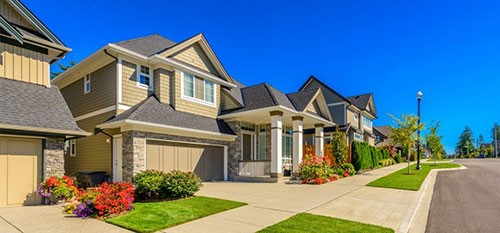Published on:
 More than six of every 10 new homes started in 2018 were built within a community or homeowner’s association (HOA), according to data from the Census Bureau’s Survey of Construction (SOC). That share (62.5%) is the highest since records began in 2009, when only 47.6% of starts were part of a “covenanted” association.
More than six of every 10 new homes started in 2018 were built within a community or homeowner’s association (HOA), according to data from the Census Bureau’s Survey of Construction (SOC). That share (62.5%) is the highest since records began in 2009, when only 47.6% of starts were part of a “covenanted” association.
That Census survey found that 543,000 of all new starts during 2018 were part of an HOA or community association. That number was up nearly 6.9% from 2017, when 508,000 new homes were part of a HOA.
A comparison of the nine census divisions reveals wide variation in the proportion of homes in such communities. The Mountain Division claims the highest share at 82.4%, well above the U.S. average of 62.5%. At the other end of the spectrum is the Middle Atlantic Division, with only 28.6% of new homes being part of a community or homeowner association. In the Pacific Division, which encompasses the states of Alaska, California, Hawaii, Oregon and Washington, 56% of new starts are within an HOA.
Currently, an estimated 24% of the U.S. population resides in HOA-governed housing. In general, membership in an HOA is mandatory for all owners in the designated community.
The Census Bureau defines community or homeowner’s associations as “formal legal entities created to maintain common areas of a development and to enforce private deed restrictions; these organizations are usually created when the development is built, and membership is mandatory.” HOAs can include single-family homes, townhouses, condominiums, co-ops, retirement communities, vacation timeshare communities, and other groups of homes in planned developments and communities.
Estimates on the number of community associations vary. The Community Association Institute’s National and State Statistical Review for 2018 tallied 347,000 communities, 26.9 million housing units, and 73.5 million residents. That’s up from the 1970 totals of 10,000 communities, 0.7 million housing units and 2.1 million residents.
HOA-USA, a resource for volunteer-managed associations, maintains a comprehensive directory of HOAs in the U.S., which it offers free to all associations as a way for them to “stay informed of important issues.” It estimates there are 351,000 homeowner associations in the country representing over 40 million households. According to HOA-USA, approximately 70% of all homeowner associations are completely managed by volunteers.
The steady growth of homes being built within a community or homeowner’s association – at least 50% since 2011 – has led to the formation of organizations to assist residents in managing their communities’ obligations as outlined in their governing documents.
The Community Associations Institute (CAI) is one such organization. It was organized in 1973 through the joint efforts of the Urban Land Institute (ULI), National Association of Home Builders (NAHB), the U.S. League of Savings and Loan Associations, the Veterans Administration, the U.S. Department of Housing and Urban Development and others.
Since its formation, CAI has grown to become the largest paid-membership organization for association board members and members of community management staff. Its international memberships includes more than 40,000 members in 64 chapters. Its services include information, best practices resources, education and advocacy.
Another entity, iProperty Management, acts as a one-stop resource for landlords, tenants, and real estate investors by providing up-to-date information on property management, investing and real estate law. According to its research, roughly 8,000 new HOAs are formed each year, noting “There are very few newly constructed neighborhoods without them, as local development planning processes typically mandate an HOA when approving a new community.”